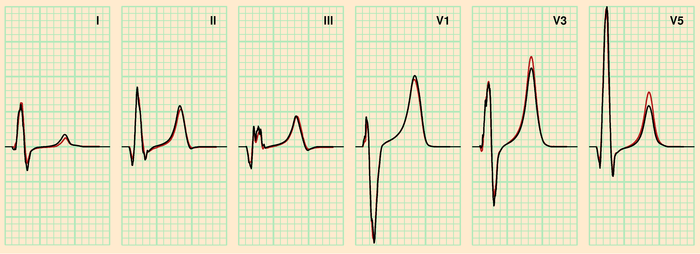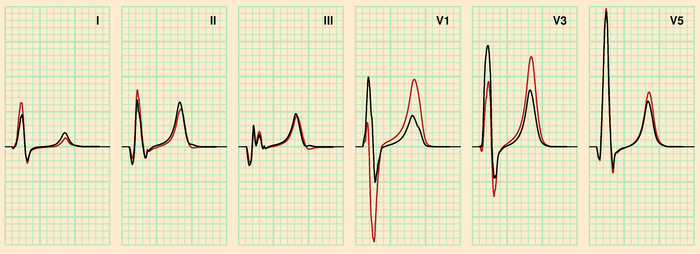

These simulated electrocardiogram (ECG) traces show two important technical points about ECG simulation.
The upper panel shows ECGs computed with a finite-difference model of a human torso at 1-mm resolution (red) and with a boundary-element (BEM) model (black). Finite-difference at this resolution is computationally very expensive, but it is also a very reliable method to simulate the ECG in a heart model with both intracellular and extracellular anistotropy. A BEM model is much more economic, but it can handle these anisotropies only in an approximate way. The depicted ECG traces show that the resulting errors are in fact quite small, indicating that BEM models can be safely used.
The lower panel compares the same ECG, computed using an anisotropic model (red), with an ECG computed using an isotropic model (black). This leads to large errors in the signals that are recorded with electrodes relatively near the heart (V1, V3, and V6). This shows that anisotropy cannot be neglected.